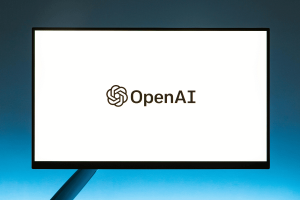In the ever-evolving landscape of artificial intelligence (AI), Large Language Models (LLMs) have emerged as powerful tools that transform the way we interact with technology. These advanced systems are designed to understand, generate, and manipulate human-like language, setting the stage for a new era of interaction between humans and machines.
The roots of LLMs trace back to the early advancements in natural language processing and machine learning. While smaller language models existed before, it wasn’t until the last decade that the combination of huge datasets, advanced algorithms, and powerful computers came together to create advanced language models. A milestone moment occurred with the introduction of OpenAI’s GPT (Generative Pre-trained Transformer) series, which showcased the potential of LLMs to grasp complex language and generate coherent and relevant text.
They have become indispensable tools for industries, ranging from healthcare and finance to entertainment and customer service due their ability to learn from diverse and extensive datasets that enable them to adapt to various domains and make them versatile assets in addressing an array of challenges.
As organizations increasingly integrate LLMs into their workflows, understanding the intricacies of these models becomes paramount for professionals and enthusiasts alike, prompting the need for a comprehensive guide to navigate this continuously expanding tool.
What are Large Language Models (LLMs)?
First things first, what is an LLM?
Large Language Models (LLMs) are advanced computer programs designed to understand and generate human-like text on a massive scale. They are made with sophisticated algorithms, which are sets of rules that guide the models’ understanding, and extensive datasets— collections of texts that teach them the complexities and nuances of the human language. Their knowledge is then further expanded through digesting, or reading, relevant information found on the internet and other sources.
What makes them remarkable is their ability to learn from unlimited sources and then apply that whenever possible and appropriate across a wide domain. It’s like having a language-savvy assistant that can understand and produce content in a way that mirrors human communication. And due to their great versatility and adaptability, they have become game-changers in every industry.
Put simply, they are state-of-the-art language model programs powered by advanced technology that have become an integral part of modern AI applications and play a key role in automating tasks that involve the understanding and generation of content containing human-like text.
How Do LLMs Work?
Now, we dive deeper into the intricate architecture of these powerful language models to tackle the query: How do LLMs work?
The way LLMs work is you interact with the program through prompts, commands, and/or questions. It then taps into its learned knowledge and draws on its data to give a direct response using human-like language. That is the basic workflow, which sounds extremely simple, but there’s actually a lot happening behind the scenes.
We’ve previously mentioned that they use algorithms, datasets, and online resources in order to understand the human language and generate human-like text. To explain further, the algorithms or rules, enable them to grasp the relationship between words, understand context, and learn the flow of the language. It’s as if the model is picking up on the subtle cues and structures that make human communication tick. This intricate learning process allows LLMs to generate text that sounds natural and is contextually appropriate.
How Do You Train LLMs?
Training an LLM is akin to teaching a language to a child – it requires exposure to a vast array of examples. In the case of LLMs, this involves exposing the model to massive datasets. The training process typically consists of three main phases: pre-training, fine-tuning, and iterative refinement.
Pre-training
Pre-training is the first step in the process where the model is exposed to vast amounts of diverse text data to create something of a knowledge foundation. It’s basically like giving it a massive library to use as reference in understanding language patterns, grammar rules, writing styles, context, semantics, and more.
Fine-tuning
Once pre-training is complete, the model is fine-tuned for specific applications and fields by exposing it to more targeted datasets related to the desired outcome. The training could focus on a variety of tasks, such as writing creative content and answering specific questions, or a specific domain, such as healthcare, finances, or customer service. Doing so adjusts its parameters to become more proficient in the selected area.
Iterative Refinement
Finally, we move on to iterative refinement, which, as the name suggests, is where the model goes through cycles of pre-training and fine-tuning, continuously learning and adapting to enhance its language comprehension and generation capabilities. Other techniques may be employed during this process, such as transfer learning, which allows the models to leverage knowledge gained from one task in order to excel in another.
This dynamic approach is what makes LLMs versatile and adaptable. However, training is obviously not a simple task. It demands substantial resources, expertise in handling large-scale neural networks, and many more.
3 Examples of LLMs
There are currently three notable examples of LLMs that have made significant contributions to the landscape using their unique strengths and capabilities.
1. Generative Pre-trained Transformer (GPT) Series
Anyone using the internet is most likely familiar with Open AI’s GPT series or more specifically its ChatGPT models. The name itself gives us an idea of its features. “Generative” refers to the model’s ability to create new content rather than relying solely on pattern recognition. It’s also clear that the model has been pre-trained and, therefore, has been fed a variety of data, enabling it to understand a broad spectrum of language. As such, the latest iteration of the LLM, ChatGPT-4 now excels in tasks like language translation, text completion, and creative writing.
2. Bidirectional Encoder Representations from Transformers (BERT)
Google’s Bidirectional Encoder Representations from Transformers – BERT for short – focuses on understanding context in both directions, hence the word “bidirectional.” Basically, what this means is that it tries to comprehend words in relation to the entire sentence rather one at a time. This enables it to capture context and meaning more accurately, making it effective in various natural language understanding tasks. Some great use cases for BERT are search queries and question answering as it considers the entire conversion to provide more precise and relevant responses.
3. Text-to-Text Transfer Transformer (T5)
T5 is another one of Google’s creations, and it takes on a unique approach by treating all language tasks as converting input text to output text. Simply put, it has a text-to-text approach, which requires a fairly simple architecture and training process and allows it to seamlessly adapt to various tasks without much task-specific modifications. The model is ideal for translation and summarization applications and most others where text is used for the input and output.
These three LLMs that we’ve listed are what we believe are the most notable ones in the market. There are hundreds more available for you to use and study should you want to get into the field and learn more about how they work.
8 Benefits of LLMs
LLMs are known to be transformative tools that offer a myriad of benefits to individuals and organizations across diverse industries. Here, we’ve listed eight advantages that proper utilization can bring you:
1. Natural Language Understanding
LLMs excel in understanding the context, tone, and nuances of the human language. They are able to facilitate human-like interactions, which is particularly beneficial in applications like virtual assistants, chatbots, and search engines where it is important to have a clear grasp of user intent.
2. Versatile Applications
The tool is capable of carrying out an extensive array of tasks, including answering questions, language translation, summarization, and content generation. Industries that have these tasks as part of their daily workload can find much value in the versatility of LLMs.
We’ll go more into the different applications of LLMs in the latter part of this article.
3. Automation and Efficiency
Processes that involve text generation, such as drafting reports, generating copy, and creating personalized responses for customer service, can easily be automated using these language-processing models, thereby increasing efficiency and productivity within a system.
4. Language Translation and Multilingual Support
Perhaps one of the biggest benefits of utilizing and training LLMs is their potential to break down language barriers and facilitate global communication. With enough advancements, these tools should be able to provide extremely accurate language translations as if they were human translators.
5. Improving Accessibility
Accessibility and user experience in applications and devices can also be enhanced by enabling more natural and context-aware interactions, particularly in voice-activated systems and smart assistants, like the ones in your mobile phones.
6. Innovative Creativity
Hard as it may be to believe but these computer tools and programs possess a level of creativity that they can use to generate original content in the forms of poetry, stories, or lyrics. This opens up possibilities for innovative applications in the industry of media, arts, and entertainment.
7. Knowledge Extraction and Summarization
As mentioned many times, LLMs are trained with vast datasets which they can easily sift through in order to extract relevant information, providing aid in knowledge extraction, acquisition, and summarization. The process makes large amounts of information easier to digest, and they can even adjust according to the user’s intellectual capabilities.
8. Continuous Learning and Adaptability
LLMs are able to remain relevant and effective over time by continuously learning from new information, adapting to evolving language trends, and staying updated with the latest developments in whichever industry they are trained in.
5 Challenges with LLMs
While the potential of LLMs is vast, it’s essential to acknowledge the challenges and considerations that are holding back the technology:
1. Bias and Fairness
If and when training data contains biases, the model may inadvertently learn, reproduce, and amplify those in its responses, which may lead to fairness issues. In order to maintain impartiality, it is essential to screen datasets and ensure they are free of bias as much as possible.
2. Ethical Concerns
Perpetuating certain biases, particularly those that are harmful, may actually lead to ethical concerns. Beyond that it is also possible for LLM-generated content to be used unethically – as in misinformation, deep fakes, phishing attacks, or malware. As of this writing, there are no regulations to ensure responsible deployment and use of LLMs and their products, but there may be along the way in order to prevent unintended consequences.
3. Data Privacy
Much like with inadvertently adapting bias, LLMs trained on sensitive data may also unintentionally reveal private or confidential information. It is crucial that data is safeguarded when deploying these models, especially in industries with strict privacy regulations, such as finance and information technology.
4. Environmental Impact
The operation and training of LLMs, especially in a large scale and those with billions of parameters, requires continuous use of large amounts of energy. It can take days, weeks, or even months to get them prepped for their respective tasks, not to mention the multiple servers and cooling systems needed to keep them alive. All this leads to an alarming amount of carbon emissions that make a huge impact on the environment.
5. Computational Resources
As you may have deduced from the previous point, running LLMs is a resource-intensive endeavor that requires advanced hardware and significant energy consumption. And you can only have those with sufficient financial, or computational, resources. As such, accessibility is exclusive to only those who can afford it. Small organizations or individuals who have little to no financial capacity are left unable to leverage the tool.
5 Applications of LLMs
We’ve gained an understanding of LLMs, gone over notable examples, and enumerated the benefits they offer as well as the challenges that hold them back. Now, we’ll quickly take a look into some of its many applications.
- Content generation – the tool is capable of generating high-quality content for various purposes, including but not limited to marketing materials, articles, scripts, and more.
- Language translation – as mentioned previously, the tool has the potential to break down linguistic barriers and enable seamless communication across different languages through instant and accurate translation.
- Customer support – they can contribute to the automation of customer support processes by efficiently handling routine queries and freeing up actual agents for more complex issues.
- Sentiment analysis – this is most relevant for brand monitoring, customer feedback analysis, and market research where the model can decipher emotional tones in text.
- Code generation – LLMs are capable of generating code snippets and assisting developers in programming tasks in order to ease and enhance software development.
These five barely scratch the surface of what LLMs can do. They will continue to evolve, and as they do, their impact on industries, businesses, and daily life is likely to expand, creating new opportunities for everyone.
Catalyze Your Success with Large Language Models
In summary, large language models are sophisticated systems that are born from the combination of advanced algorithms and vast datasets. They redefine how we approach human-machine collaboration and offer a variety of benefits – with corresponding challenges – across different domains or fields.
As industries seamlessly integrate these models into their workflows, understanding their capabilities, limitations, and nuances becomes essential. They should not be seen as mere tools, but enablers of innovation in the modern era.
Hopefully, this guide has helped you gain a fundamental understanding of LLMs and encouraged you to understand and utilize the technology as a catalyst to your success.
If you want to learn more about Multi LLMs or apply what you’ve learned, you can check out our own Multi LLM model and try it for free.











